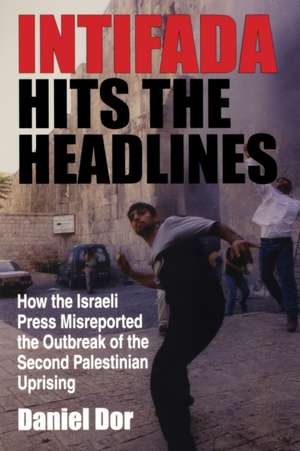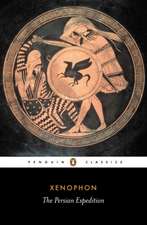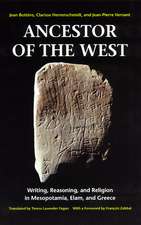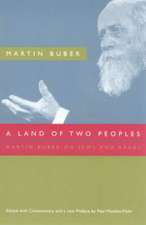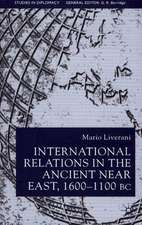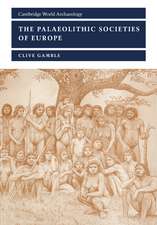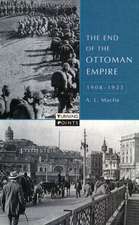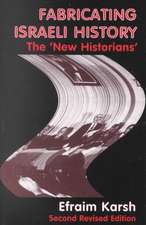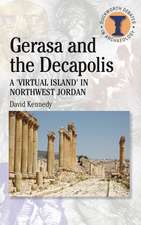Intifada Hits the Headlines – How the Israeli Press Misreported the Outbreak of the Second Palestinian Uprising
Autor Daniel Doren Limba Engleză Paperback – 17 feb 2004
Preț: 160.70 lei
Nou
Puncte Express: 241
Preț estimativ în valută:
30.75€ • 32.17$ • 25.54£
30.75€ • 32.17$ • 25.54£
Carte tipărită la comandă
Livrare economică 03-17 aprilie
Preluare comenzi: 021 569.72.76
Specificații
ISBN-13: 9780253216373
ISBN-10: 0253216370
Pagini: 200
Dimensiuni: 156 x 235 x 15 mm
Greutate: 0.32 kg
Editura: MH – Indiana University Press
Locul publicării:United States
ISBN-10: 0253216370
Pagini: 200
Dimensiuni: 156 x 235 x 15 mm
Greutate: 0.32 kg
Editura: MH – Indiana University Press
Locul publicării:United States
Cuprins
Table of Contents:
Preface
Acknowledgments
1. Introduction
2. "Under Arafat's Baton"
3. "Make No Mistake, Yasser"
4. "The Limits of Restraint"
5. "A Fifth Column"
6. In All Their Murderous Ugliness"
7. "We Have Turned Every Stone"
8. Conclusion
Notes
Bibliography
Index
Preface
Acknowledgments
1. Introduction
2. "Under Arafat's Baton"
3. "Make No Mistake, Yasser"
4. "The Limits of Restraint"
5. "A Fifth Column"
6. In All Their Murderous Ugliness"
7. "We Have Turned Every Stone"
8. Conclusion
Notes
Bibliography
Index
Recenzii
If more studies like Dor's were published, audiences worldwide might recognize how poorly news is reported and written and take measures to resist. Dor (communication, Tel Aviv Univ.) scrutinized the news coverage of the first month (October 2000) of the Intifada in Israel's three largest dailies, Yediot Ahrenot, Ma'ariv, and Ha'aretz. Using ten parameters (positioning, graphic saliency, headline wording, etc.), he analyzed all material; he then interviewed 18 senior editors, reporters, and senior commentators to discover their rationale for what he called a one-sided, partial, censored, and biased picture of reality. His conclusions are shocking yet not surprising, in the context of subsequent coverage of terrorism and the Iraq War. The contrast between what reporters sent in and what was printed was stark. The editors had their own agendas (obtained from television reports), and though they knew far less about the intricacies of the general picture than senior reporters, they adopted the political and military establishment's judgments to prevent friction with the powers-that-be. The result was public-be-damned journalism that presented the conflict in administratively engineered language, loaded-with-blame (placed on Arafat) commentaries, under apocalyptic and hysterical headlines. Similar studies of television news coverage would likely reveal a situation many times worse. Summing Up: Essential. Upper-division undergraduates through faculty and professionals; general readers.--J. A. Lent, Temple University"Choice" (01/01/2004)
Notă biografică
Daniel Dor
Descriere
Shows how media shape public opinion in times of crisis
